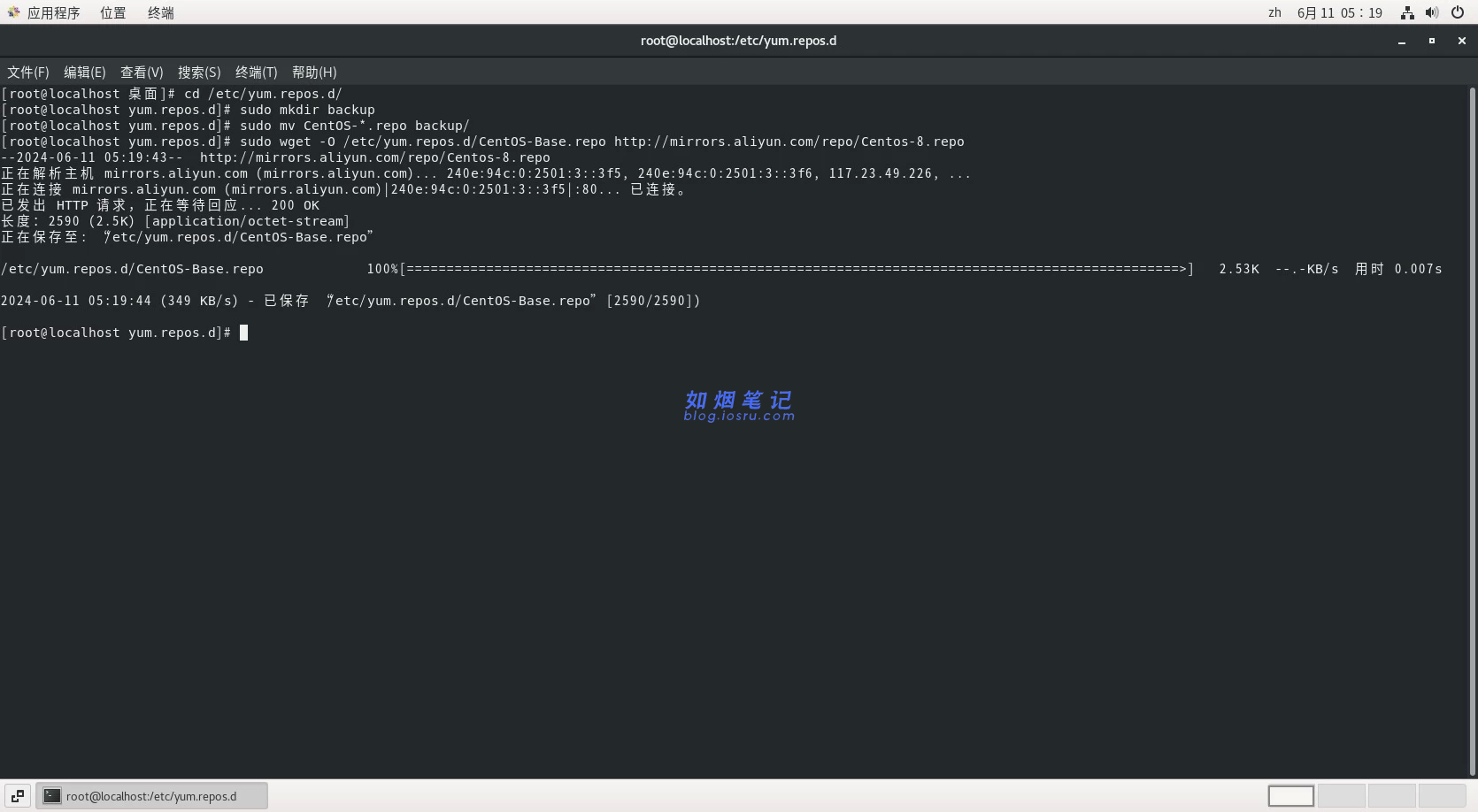文章最后更新时间:
![图片[1]- python爬虫分享(爬取静态网站)- 如烟笔记](https://blog.iosru.com/wp-content/uploads/2024/11/20241122143227684-1459e0e171a35aa12b19e9812c8524c1.webp)
思维导图
+----------------------------+
| 导入库 |
+------------+---------------+
|
v
+------------+---------------+
| 定义爬虫类 |
| - 名称 |
| - 起始URL列表 |
| - 自定义设置 |
+------------+---------------+
|
v
+------------+---------------+
| 解析函数 |
| - 解析响应 |
| - 确定保存路径 |
| - 保存HTML内容 |
| - 查找资源 (CSS, JS, 图片)|
| - 递归抓取内部链接 |
+------------+---------------+
|
v
+------------+---------------+
| 保存资源函数 |
| - 解析资源URL |
| - 确定保存路径 |
| - 保存资源内容 |
+------------+---------------+
|
v
+------------+---------------+
| 运行爬虫 |
| - 设置输出目录 |
| - 初始化爬虫 |
| - 启动爬虫进程 |
+----------------------------+
详细
- 设置和初始化
导入必要的库,定义爬虫类,并设置初始URL列表和自定义设置。
import os
import scrapy
from bs4 import BeautifulSoup
from scrapy.crawler import CrawlerProcess
from urllib.parse import urljoin, urlparse, urlunparse定义爬虫类
class WebsiteSpider(scrapy.Spider):
# 爬虫的名称
name = "mnchen"
# 要爬取的初始URL列表
start_urls = ['https://mnchen.cn']
# 自定义设置
custom_settings = {
'USER_AGENT': 'Mozilla/5.0 (Windows NT 10.0; Win64; x64) AppleWebKit/537.36 (KHTML, like Gecko) Chrome/103.0.5060.114 Safari/537.36',
'DOWNLOAD_DELAY': 1,
'RETRY_ENABLED': False,
'LOG_LEVEL': 'ERROR'
}- 解析函数
处理初始响应并使用 BeautifulSoup 解析 HTML 内容。确定保存 HTML 内容的路径并保存,同时查找页面内的 CSS、JS 和图片资源,递归抓取内部链接。
# 解析函数,处理每个响应
def parse(self, response):
soup = BeautifulSoup(response.text, 'html.parser')
# 确定文件保存路径
if response.url == self.start_urls[0]:
filename = 'index.html'
else:
page_path = response.url.replace(self.start_urls[0], '').strip('/')
filename = os.path.join(page_path, 'index.html')
# 创建目录并保存HTML页面
if filename != 'index.html':
os.makedirs(os.path.dirname(filename), exist_ok=True)
with open(filename, 'w', encoding='utf-8') as f:
f.write(response.text)
# 下载页面中的CSS、JS和图片等资源
for resource in soup.find_all(['link', 'script', 'img']):
url = resource.get('href') or resource.get('src')
if url:
parsed_url = urlparse(url)
sanitized_path = urlunparse(parsed_url._replace(query=''))
absolute_url = urljoin(response.url, sanitized_path)
yield scrapy.Request(absolute_url, callback=self.save_resource, meta={'resource_url': url})
# 抓取内部链接,继续递归爬取
for link in soup.find_all('a'):
href = link.get('href')
if href and href.startswith('/'):
yield response.follow(href, self.parse)- 保存资源函数
处理资源文件(CSS、JS、图片)的保存。
# 保存资源文件的函数
def save_resource(self, response):
resource_url = response.meta['resource_url']
parsed_url = urlparse(resource_url)
sanitized_path = urlunparse(parsed_url._replace(query=''))
path = sanitized_path.lstrip('/')
if not path:
path = response.url.split("/")[-1]
# 确保文件有适当的后缀
if not os.path.splitext(path)[1]:
path += ".html"
os.makedirs(os.path.dirname(path), exist_ok=True)
with open(path, 'wb') as f:
f.write(response.body)- 运行爬虫
设置输出目录,初始化并启动爬虫进程。
# 创建目录保存爬取的文件
output_dir = '2024-10-17'
if not os.path.exists(output_dir):
os.makedirs(output_dir)
# 切换到新创建的目录
os.chdir(output_dir)
# 运行爬虫
process = CrawlerProcess()
process.crawl(WebsiteSpider)
process.start()完整代码
import os
import scrapy
from bs4 import BeautifulSoup
from scrapy.crawler import CrawlerProcess
from urllib.parse import urljoin, urlparse, urlunparse
# 定义爬虫类
class WebsiteSpider(scrapy.Spider):
# 爬虫的名称
name = "mnchen"
# 要爬取的初始URL列表
start_urls = ['https://mnchen.cn']
# 自定义设置
custom_settings = {
'USER_AGENT': 'Mozilla/5.0 (Windows NT 10.0; Win64; x64) AppleWebKit/537.36 (KHTML, like Gecko) Chrome/103.0.5060.114 Safari/537.36',
'DOWNLOAD_DELAY': 1,
'RETRY_ENABLED': False,
'LOG_LEVEL': 'ERROR'
}
# 解析函数,处理每个响应
def parse(self, response):
soup = BeautifulSoup(response.text, 'html.parser')
# 确定文件保存路径
if response.url == self.start_urls[0]:
filename = 'index.html'
else:
page_path = response.url.replace(self.start_urls[0], '').strip('/')
filename = os.path.join(page_path, 'index.html')
# 创建目录并保存HTML页面
if filename != 'index.html':
os.makedirs(os.path.dirname(filename), exist_ok=True)
with open(filename, 'w', encoding='utf-8') as f:
f.write(response.text)
# 下载页面中的CSS、JS和图片等资源
for resource in soup.find_all(['link', 'script', 'img']):
url = resource.get('href') or resource.get('src')
if url:
parsed_url = urlparse(url)
sanitized_path = urlunparse(parsed_url._replace(query=''))
absolute_url = urljoin(response.url, sanitized_path)
yield scrapy.Request(absolute_url, callback=self.save_resource, meta={'resource_url': url})
# 抓取内部链接,继续递归爬取
for link in soup.find_all('a'):
href = link.get('href')
if href and href.startswith('/'):
yield response.follow(href, self.parse)
# 保存资源文件的函数
def save_resource(self, response):
resource_url = response.meta['resource_url']
parsed_url = urlparse(resource_url)
sanitized_path = urlunparse(parsed_url._replace(query=''))
path = sanitized_path.lstrip('/')
if not path:
path = response.url.split("/")[-1]
# 确保文件有适当的后缀
if not os.path.splitext(path)[1]:
path += ".html"
os.makedirs(os.path.dirname(path), exist_ok=True)
with open(path, 'wb') as f:
f.write(response.body)
# 创建目录保存爬取的文件
output_dir = '2024-10-17'
if not os.path.exists(output_dir):
os.makedirs(output_dir)
# 切换到新创建的目录
os.chdir(output_dir)
# 运行爬虫
process = CrawlerProcess()
process.crawl(WebsiteSpider)
process.start()
免责声明
免责声明:
本博客/网站/教程中所分享的Python爬虫代码和相关内容仅供学习和研究使用。作者不对因使用本代码或内容而产生的任何直接或间接损失负责。使用者需自行承担使用本代码的风险。
特别提醒:
- 合法性:在使用Python爬虫时,请务必遵守相关法律法规,不要侵犯他人的合法权益。确保爬虫操作获得了目标网站的明确许可。
- 隐私保护:请勿使用爬虫采集、存储、传播他人的个人隐私信息,确保遵循数据隐私保护相关法律规定。
- 资源使用:合理使用计算资源,避免对目标网站造成负担或损害。请勿进行恶意爬取、滥用爬虫工具等行为。
- 责任自负:因使用者违反相关法律法规、侵犯他人权益或因使用本博客/网站/教程中的内容而造成的任何法律责任和经济损失,均由使用者自行承担。
本博客/网站/教程仅提供技术分享,作者保留对本免责声明的修改权。
© 版权声明
本站收集的资源仅供内部学习研究软件设计思想和原理使用,学习研究后请自觉删除,请勿传播,因未及时删除所造成的任何后果责任自负。
如果用于其他用途,请购买正版支持作者,谢谢!若您认为「RuYan」发布的内容若侵犯到您的权益,请联系站长邮箱:axspring@qq.com 进行删除处理。
本站资源大多存储在云盘,如发现链接失效,请联系我们,我们会第一时间更新。THE END




























暂无评论内容